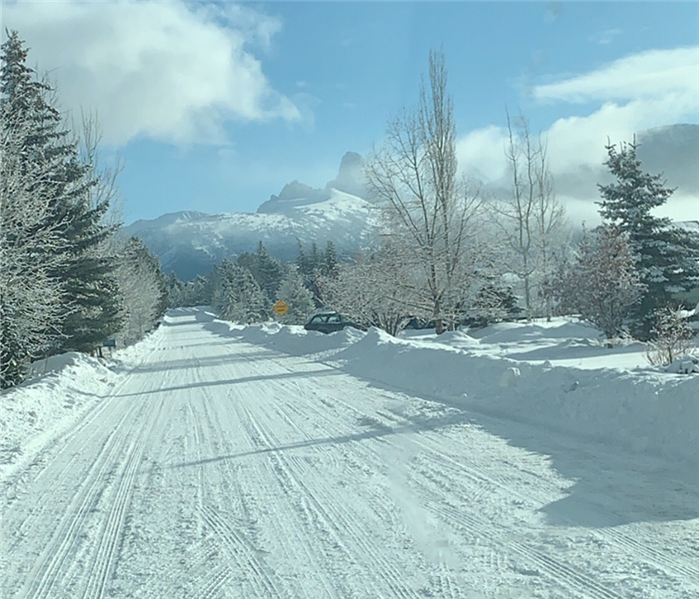Stormy weather ahead
1/11/2019 (Permalink)
SERVPRO is there for you 7 days a week, 24 hours a day. That means our crews drive in all sorts of different weather. The most dangerous though is the winter weather months. We travel all over Eastern Idaho and experience all the highs and lows of the weather patterns.
We are very big on safety and require our crew members to always drive safe and remember how stubborn the winter months can be. According to www.coverhoud.com here are some tips to keep you safe while driving in these harsh conditions.
- Prepare your car
Once the first few drops of water start hitting your windshield, you should immediately turn on your windshield wipers and your headlights. - Focus on the road
When the rainwater first hits the dry road, it mixes with built-up oil and grease deposits, making the roads incredibly slick. This makes the initial moments of a rainstorm more dangerous than if it has been raining for a while, since the water will eventually wash away the build up. - Slow down sooner
The rain will make the roads wetter and more slippery, which makes it take longer to come to a full stop. When approaching a red light or traffic, be sure you begin the braking process earlier and slower than usual to give yourself additional time to halt your forward progression without the car sliding.This reduces the chances of the vehicle hydroplaning. - Keep calm
No matter how safely you drive, there is always a chance the car will end up hydroplaning. If this happens, don't panic and slam on the brakes or spin the wheel, since this could cause the car to spin out. Edmunds.com recommended slowly taking your foot off the brake pedal as you calmly keep steering straight and the car will eventually regain traction. - Avoid puddles
Even the deepest puddles can appear shallow. If you approach a puddle, check to see if it approaches the bottom of the car doors. Don't take any unnecessary chances with deep water and either drive around it or find an alternative route. If you must drive through it, proceed slowly and cautiously. Getting any water in the engine can risk damage to the electronic cooling systems. - Steer clear of traffic
Sometimes you cannot avoid the other cars around you. If there is considerable traffic on the road around you, maintain the three-second rule. If possible, extend this to five seconds. Stay away from buses and trucks, since their tires will spray up a considerable amount of water in their wake and reduce your visibility. - Pull over
If the rain becomes too torrential to see anything, pull over and wait it out. The safest form of driving is not driving at all, and in situations where visibility drops to near zero, there's no need to risk trying to reach your destination.





 24/7 Emergency Service
24/7 Emergency Service